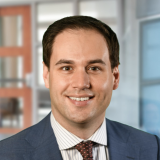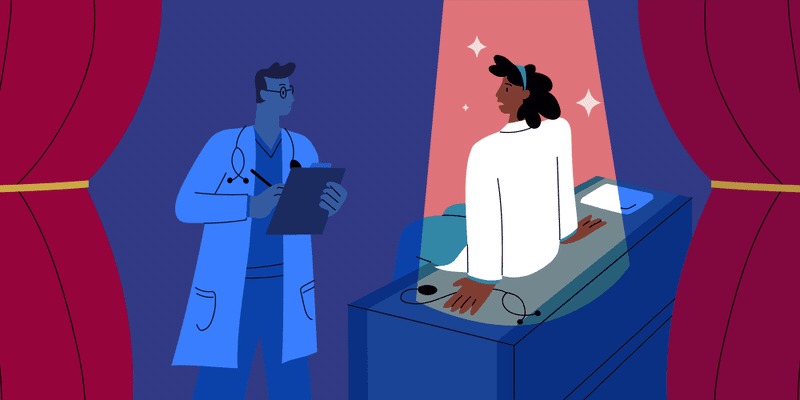“He’s an idiot. The pain is in my knee. He doesn’t know what he’s talking about. Back exercises for knee pain?” My patient was incredulous after seeing a sports medicine doctor I had recommended.
“It’s entirely plausible that the pain in your knee is coming from your back,” I assured him. “You do have herniated discs after all.”
To be honest, this connection hadn’t occurred to me at first either. When I saw the same physician for my own hip pain, he took X-rays of both hips, examined me thoroughly, and said, “You don’t have a hip problem; you have a back problem.” He printed out some back exercises for me to do. I didn’t question the doctor’s conclusion. I simply thanked him and incorporated the exercises into my daily yoga routine. My hip pain improved.
In my patient’s case, the same scenario unfolded. The doctor ordered X-rays, performed a thorough examination, and suggested back exercises. But my patient was dissatisfied.
“He didn’t listen to me,” he complained. “I don’t like the way he spoke to me. He had an agenda.”
Was his reaction because he didn’t get the diagnosis he expected, or did the doctor genuinely fail to listen, or perhaps a bit of both? Without a videotape of the visit, I can’t weigh in.
Ultimately, my patient sought another opinion, perhaps hoping for a diagnosis he wanted. Distrusting the first physician’s advice, he neither began the suggested exercises nor reported for physical therapy. His pain persisted.
Despite this poor outcome, I cannot entirely blame the patient. Referred pain is a well-known medical phenomenon, but it’s not commonly known to the layman. When the doctor told me my hip pain was coming from my back, I accepted his judgment. Perhaps my patient, a layman, needed a fuller explanation. Maybe the doctor should have said, “The recommendation I’m about to give you might sound odd, but here’s why I think it will help.” Is that going above and beyond, or is it a necessary part of a physician’s duty?
Both physician and patient share responsibility for the success of any medical visit. Patients must communicate clearly to the doctor. If a patient merely nods without asking questions and doesn’t seek to understand the physician’s reasoning, then he’s partly to blame for the failure of the encounter. Why didn’t my patient say, “It doesn’t make sense. How can knee pain be coming from the back?” Likewise, a doctor should always ask, “Do you have any questions? Is this clear to you?” Without this, the visit may fail on his account.
But beyond communication, the real issue is rapport. If you expect a patient to follow your advice, you must first establish a relationship. This may be difficult in the case of a single encounter for a specific problem. That’s why I make it clear to prospective patients that as a holistic doctor, my job is not to fix problems but rather to treat the whole person. Anyone looking for a quick fix is likely to be disappointed.
I recall a patient who came in looking to get rid of a postnasal drip that had been plaguing her for years. She had already visited several ENT doctors with no relief. I told her I would try to help her, and after doing a thorough history and physical, I suggested a diet change. When three months later the problem hadn’t resolved, she demanded a refund (not given) and dropped out of the practice.
Was this poor outcome entirely her fault, or had I failed to properly explain my approach? I told her my goal was to optimize overall health. She insisted that her health was perfect, except for this one issue. Obviously, she wasn’t a good match for my practice.
Setting expectations with potential new patients is crucial. This woman was a relative of a long-time patient. It may have been my warm feelings toward my old patient that led me to agree to treat her. I recall the phrase I used when she inquired if I could help her — “It’s within my purview.” But in retrospect, that wasn’t sufficient. When someone comes to a holistic physician looking for a narrow fix, the physician must explain clearly, “This is not the way I work. I take a holistic approach, but if, knowing this, you still want to see me, then you’re welcome.”
Ultimately, doctor and patient must ensure they are truly communicating. In some respects, the doctor-patient relationship resembles a marriage. One of my close friends, who enjoyed a long and successful marriage, told me that when she and her husband would argue, she would make sure to repeat back to him his point of view to make sure she got it right. What a brilliant idea! If doctors and patients did this, both would surely benefit, and so would their outcomes.
How do you build trust and clarity in patient encounters, especially when the diagnosis isn’t what they expect? Share in the comments.
Marjorie Ordene, MD, is an integrative physician practicing in Brooklyn, NY. Her essays, short stories, and poetry have been published in various magazines and anthologies including The Sun, Tablet, Lilith, and Michigan Avenue Review.
Image by Getty







